By Wayne Scraba,www.automedia.com
Rotating tires is important (and always has been) for car maintenance. If you rotate the respective wheels and tires on a given axle, tire wear is even. The result is almost always balanced traction and handling over a period of time. Most tire warranties demand the tires be rotated on a specific mileage schedule. And many tire manufacturers recommend rotation at between 3,000 and 5,000 miles.
Tire balancing
Making each tire function in as many of the vehicle’s wheel positions as possible makes evening out tire wear feasible. Naturally, this can’t make up for tire wear caused by tired or malfunctioning mechanical components or improper inflation. When considering the mechanics of a motor vehicle, keep in mind that the front end often has a more difficult task than the rear. For example, in a front-wheel-drive car, the tires are tasked with steering, stopping, moving up and down, and, of course, pulling the vehicle forward.
In a high-performance rear-wheel-drive car, you’ll likely find that the rear tires take more abuse than the front. Four-by-four vehicles and all-wheel-drive models bring their own tire wear peculiarities to the party. The bottom line: No matter what the car or truck, the wheel position can cause different rates and types of wear on a tire.
Replacing four versus two
As a tire wears, the tread depth is reduced. If all four tires wear out at more or less the same time, you can replace four tires at once. This is actually advantageous when compared to replacing tires in pairs, simply because you’ll always have equal fresh rubber on all four corners. Additionally, you have to consider that the manufacturers are constantly releasing new and improved tire configurations. The result is that your old tires could become obsolete by the time they’re worn. If replacing only two at once, there’s a good chance you’ll end up with mixed tire technology that could negatively affect how your vehicle drives.
Tire rotation pattern
So far so good, but tire rotation isn’t anything like it was a few decades ago. Way back when, most cars had identical wheels and tires on all four corners, and the spare was also a full-size job that matched the road wheels. That’s a difficult combination to find today, with space-saver spares, spare tires mounted on dedicated steel wheels (with the rest of the rolling stock on aluminum wheels), different wheel offsets and sizes front and rear, mixed tire sizes, and so on. Because of this, the rotation process differs. Here’s a look at some of the many different tire rotation pattern options.
Four same-size tires, non-directional
If the tires are non-directional and the tires and wheels are all the same size, there are three different four-tire rotation patterns most commonly used:
 The left rear goes to the right front and the right rear goes to the left front.
The left rear goes to the right front and the right rear goes to the left front.Different-size directional tires, or different offsets
What if the vehicle in question has different-size directional wheels and tires or is equipped with wheels with different offsets (wheel backspace) front and rear? In this case, the tires will definitely require dismounting, remounting and rebalancing in order to rotate the tires. Four other typical rotation patterns are as follows:
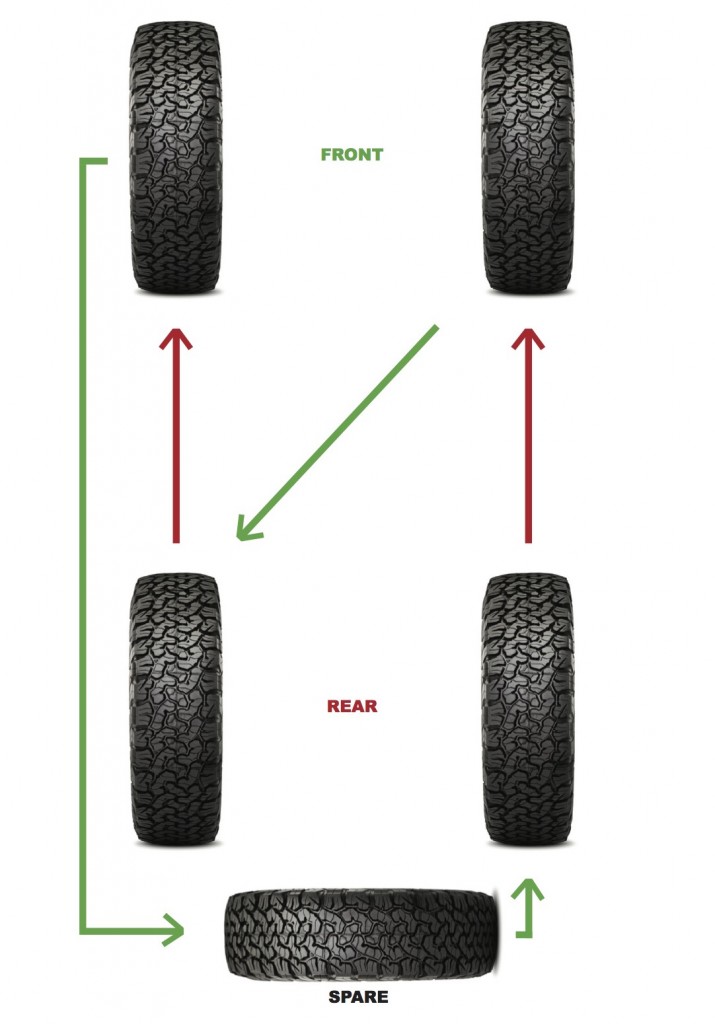 The left rear goes to left front. The right front goes to the right rear. The right rear goes to the right front.
The left rear goes to left front. The right front goes to the right rear. The right rear goes to the right front.
Front-wheel drive : The left front goes to the left rear.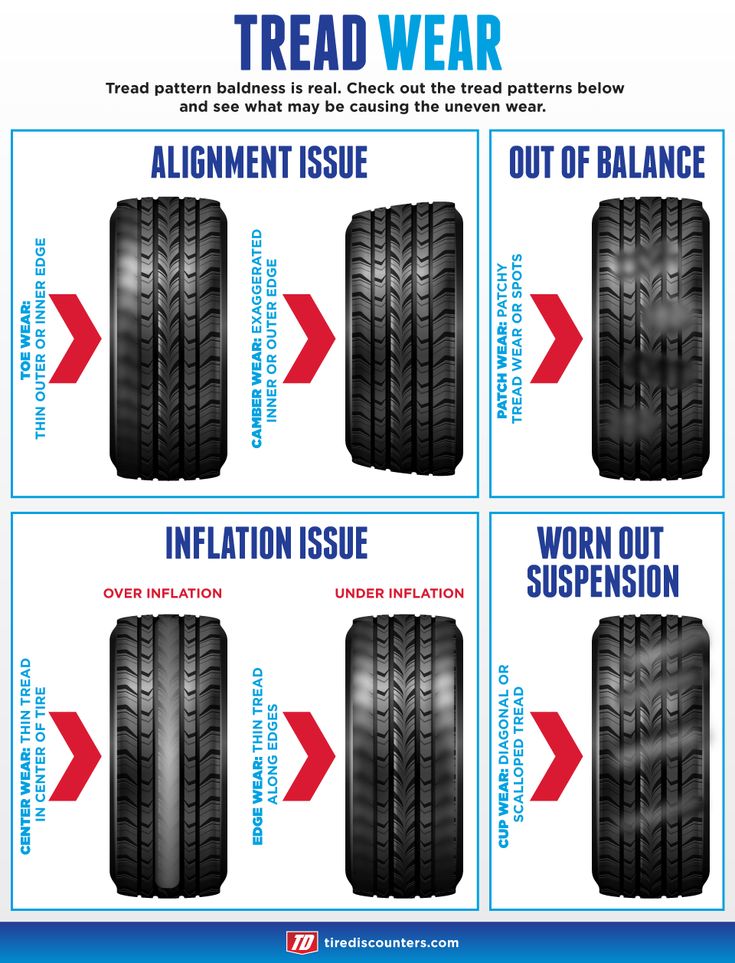 The left rear goes to the right front. The right rear goes to the left front. The spare goes to the right rear. The right front goes to the spare.
The left rear goes to the right front. The right rear goes to the left front. The spare goes to the right rear. The right front goes to the spare.
Rear-wheel drive or four-wheel drive: The left rear goes to the left front. The left front goes to the spare. The spare goes to the right rear. The right rear goes to the right front. The right front goes to the left rear.
The idea here is to distribute the wear over five tires throughout their life. This is particularly important on many all-wheel-drive vehicles in that all tires, including the spare, are, in theory, worn identically.
Tire rotation, that is routinely repositioning your vehicle’s tires in specific patterns from front to back or side to side, is an important element of tire upkeep and safety. Additionally, rotating your tires may also be required to keep your tires covered under warranty. For a quick visual summary of tire rotation, check out our Tread Life episode about tire rotation. Read on for more information about what tire rotation is, why tire rotation patterns matter, and the correct pattern for your vehicle’s needs.
Read on for more information about what tire rotation is, why tire rotation patterns matter, and the correct pattern for your vehicle’s needs.
Find Your Bridgestone Service Center
Tire rotation means periodically changing the position of each of the tires on your vehicle. You should rotate your tires as recommended by the vehicle manufacturer, or every 5,000 miles. For many of you, that will mean when you get your vehicle’s oil changed.
Regularly rotating your tires also gives you a good opportunity to visually inspect them for damage, check their air pressure, have them rebalanced if you’re noticing any vibration, and check their tread depth.
There are several reasons why tire rotation is an important element of your standard tire care. First, by routinely rotating your tires, wear is spread evenly across all four tires, and their tread life is maximized. That’s because each specific position on your vehicle requires a different give from each tire—(for example, tires on the front of a front-wheel drive vehicle will take a larger proportion of the torque and friction that’s needed for turning, accelerating and braking)—and can lead to more, or less, wear on the tire.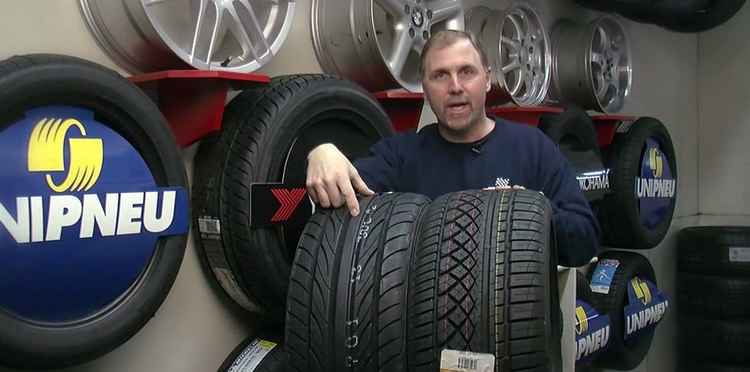 It is especially important to rotate new tires by 5,000 miles because deep, fresh tire tread is more susceptible to uneven wear.
It is especially important to rotate new tires by 5,000 miles because deep, fresh tire tread is more susceptible to uneven wear.
Secondly, even tread wear keeps the tread depth on your tires uniform, which can help keep traction and handling consistent across all four tires. This will improve cornering and braking performance and keep your vehicle safer for driving overall.
Finally, if your vehicle has all-wheel-drive, evenly worn tires lower the stresses on the drivetrain, reducing wear on expensive drive components.
For those looking for a luxury tire experience
See Tire Details This Tire Fits Your Vehicle See a map of stores near you where you can buy this tire
See Tires That Fit Does Not Fit Your Vehicle
See if it Fits Not Sure If This Tire Fits
80,000 miles of quiet, comfort and control*
See Tire Details This Tire Fits Your Vehicle See a map of stores near you where you can buy this tire
See Tires That Fit Does Not Fit Your Vehicle
See if it Fits Not Sure If This Tire Fits
Keep your life on a roll
See Tire Details This Tire Fits Your Vehicle See a map of stores near you where you can buy this tire
See Tires That Fit Does Not Fit Your Vehicle
See if it Fits Not Sure If This Tire Fits
All-season tires that won't stop until they get you there
See Tire Details This Tire Fits Your Vehicle See a map of stores near you where you can buy this tire
See Tires That Fit Does Not Fit Your Vehicle
See if it Fits Not Sure If This Tire Fits
Confident all-weather protection
See Tire Details This Tire Fits Your Vehicle See a map of stores near you where you can buy this tire
See Tires That Fit Does Not Fit Your Vehicle
See if it Fits Not Sure If This Tire Fits
Drive more and fill up your tank less*
See Tire Details This Tire Fits Your Vehicle See a map of stores near you where you can buy this tire
See Tires That Fit Does Not Fit Your Vehicle
See if it Fits Not Sure If This Tire Fits
Extended mobility PLUS improved performance through the elements
See Tire Details This Tire Fits Your Vehicle See a map of stores near you where you can buy this tire
See Tires That Fit Does Not Fit Your Vehicle
See if it Fits Not Sure If This Tire Fits
Built for your truck, SUV, or CUV
See Tire Details This Tire Fits Your Vehicle See a map of stores near you where you can buy this tire
See Tires That Fit Does Not Fit Your Vehicle
See if it Fits Not Sure If This Tire Fits
Tires that take you on a thrill ride
See Tire Details This Tire Fits Your Vehicle See a map of stores near you where you can buy this tire
See Tires That Fit Does Not Fit Your Vehicle
See if it Fits Not Sure If This Tire Fits
Tough enough to take a puncture*
See Tire Details This Tire Fits Your Vehicle See a map of stores near you where you can buy this tire
See Tires That Fit Does Not Fit Your Vehicle
See if it Fits Not Sure If This Tire Fits
Ready for heavy-duty hauls
See Tire Details This Tire Fits Your Vehicle See a map of stores near you where you can buy this tire
See Tires That Fit Does Not Fit Your Vehicle
See if it Fits Not Sure If This Tire Fits
High performance driving all year long
See Tire Details This Tire Fits Your Vehicle See a map of stores near you where you can buy this tire
See Tires That Fit Does Not Fit Your Vehicle
See if it Fits Not Sure If This Tire Fits
Handle it all in your high performance CUV or SUV
See Tire Details This Tire Fits Your Vehicle See a map of stores near you where you can buy this tire
See Tires That Fit Does Not Fit Your Vehicle
See if it Fits Not Sure If This Tire Fits
Ready for the long haul
See Tire Details This Tire Fits Your Vehicle See a map of stores near you where you can buy this tire
See Tires That Fit Does Not Fit Your Vehicle
See if it Fits Not Sure If This Tire Fits
Built to keep you and your workload going
See Tire Details This Tire Fits Your Vehicle See a map of stores near you where you can buy this tire
See Tires That Fit Does Not Fit Your Vehicle
See if it Fits Not Sure If This Tire Fits
Built for the demands of commercial highway driving
See Tire Details This Tire Fits Your Vehicle See a map of stores near you where you can buy this tire
See Tires That Fit Does Not Fit Your Vehicle
See if it Fits Not Sure If This Tire Fits
View All Season Tires
For those looking for a luxury tire experience
See Tire Details This Tire Fits Your Vehicle See a map of stores near you where you can buy this tire
See Tires That Fit Does Not Fit Your Vehicle
See if it Fits Not Sure If This Tire Fits
Keep your life on a roll
See Tire Details This Tire Fits Your Vehicle See a map of stores near you where you can buy this tire
See Tires That Fit Does Not Fit Your Vehicle
See if it Fits Not Sure If This Tire Fits
Built for your truck, SUV, or CUV
See Tire Details This Tire Fits Your Vehicle See a map of stores near you where you can buy this tire
See Tires That Fit Does Not Fit Your Vehicle
See if it Fits Not Sure If This Tire Fits
Take on the intensity of on and off road driving
See Tire Details This Tire Fits Your Vehicle See a map of stores near you where you can buy this tire
See Tires That Fit Does Not Fit Your Vehicle
See if it Fits Not Sure If This Tire Fits
Tires that take you on a thrill ride
See Tire Details This Tire Fits Your Vehicle See a map of stores near you where you can buy this tire
See Tires That Fit Does Not Fit Your Vehicle
See if it Fits Not Sure If This Tire Fits
Ready for heavy-duty hauls
See Tire Details This Tire Fits Your Vehicle See a map of stores near you where you can buy this tire
See Tires That Fit Does Not Fit Your Vehicle
See if it Fits Not Sure If This Tire Fits
Handle it all in your high performance CUV or SUV
See Tire Details This Tire Fits Your Vehicle See a map of stores near you where you can buy this tire
See Tires That Fit Does Not Fit Your Vehicle
See if it Fits Not Sure If This Tire Fits
Next level summer performance for your Sport Truck or SUV
See Tire Details This Tire Fits Your Vehicle See a map of stores near you where you can buy this tire
See Tires That Fit Does Not Fit Your Vehicle
See if it Fits Not Sure If This Tire Fits
Ready for the long haul
See Tire Details This Tire Fits Your Vehicle See a map of stores near you where you can buy this tire
See Tires That Fit Does Not Fit Your Vehicle
See if it Fits Not Sure If This Tire Fits
Built to keep you and your workload going
See Tire Details This Tire Fits Your Vehicle See a map of stores near you where you can buy this tire
See Tires That Fit Does Not Fit Your Vehicle
See if it Fits Not Sure If This Tire Fits
Built for the demands of commercial highway driving
See Tire Details This Tire Fits Your Vehicle See a map of stores near you where you can buy this tire
See Tires That Fit Does Not Fit Your Vehicle
See if it Fits Not Sure If This Tire Fits
View All Light/Medium Truck Tires
For winters worst
See Tire Details This Tire Fits Your Vehicle See a map of stores near you where you can buy this tire
See Tires That Fit Does Not Fit Your Vehicle
See if it Fits Not Sure If This Tire Fits
Luxury takes on winter
See Tire Details This Tire Fits Your Vehicle See a map of stores near you where you can buy this tire
See Tires That Fit Does Not Fit Your Vehicle
See if it Fits Not Sure If This Tire Fits
Impressive grip and control
See Tire Details This Tire Fits Your Vehicle See a map of stores near you where you can buy this tire
See Tires That Fit Does Not Fit Your Vehicle
See if it Fits Not Sure If This Tire Fits
Navigate through snow and ice in your SUV, CUV, or truck
See Tire Details This Tire Fits Your Vehicle See a map of stores near you where you can buy this tire
See Tires That Fit Does Not Fit Your Vehicle
See if it Fits Not Sure If This Tire Fits
Built for blizzards and winters worst in a commerical light truck or van
See Tire Details This Tire Fits Your Vehicle See a map of stores near you where you can buy this tire
See Tires That Fit Does Not Fit Your Vehicle
See if it Fits Not Sure If This Tire Fits
Built to get you through this winter
See Tire Details This Tire Fits Your Vehicle See a map of stores near you where you can buy this tire
See Tires That Fit Does Not Fit Your Vehicle
See if it Fits Not Sure If This Tire Fits
Keep your commercial truck or van in commission all winter
See Tire Details This Tire Fits Your Vehicle See a map of stores near you where you can buy this tire
See Tires That Fit Does Not Fit Your Vehicle
See if it Fits Not Sure If This Tire Fits
View All Winter Tires
Take control of the track
See Tire Details This Tire Fits Your Vehicle See a map of stores near you where you can buy this tire
See Tires That Fit Does Not Fit Your Vehicle
See if it Fits Not Sure If This Tire Fits
Sleek, sporty, and cornering performance
See Tire Details This Tire Fits Your Vehicle See a map of stores near you where you can buy this tire
See Tires That Fit Does Not Fit Your Vehicle
See if it Fits Not Sure If This Tire Fits
Take your sports car for a spin
See Tire Details This Tire Fits Your Vehicle See a map of stores near you where you can buy this tire
See Tires That Fit Does Not Fit Your Vehicle
See if it Fits Not Sure If This Tire Fits
Next level summer performance for your Sport Truck or SUV
See Tire Details This Tire Fits Your Vehicle See a map of stores near you where you can buy this tire
See Tires That Fit Does Not Fit Your Vehicle
See if it Fits Not Sure If This Tire Fits
Feel the rush with tires inspired by racing
See Tire Details This Tire Fits Your Vehicle See a map of stores near you where you can buy this tire
See Tires That Fit Does Not Fit Your Vehicle
See if it Fits Not Sure If This Tire Fits
Chase your competitive spirit
See Tire Details This Tire Fits Your Vehicle See a map of stores near you where you can buy this tire
See Tires That Fit Does Not Fit Your Vehicle
See if it Fits Not Sure If This Tire Fits
View All Summer Tires
For those looking for a luxury tire experience
See Tire Details This Tire Fits Your Vehicle See a map of stores near you where you can buy this tire
See Tires That Fit Does Not Fit Your Vehicle
See if it Fits Not Sure If This Tire Fits
80,000 miles of quiet, comfort and control*
See Tire Details This Tire Fits Your Vehicle See a map of stores near you where you can buy this tire
See Tires That Fit Does Not Fit Your Vehicle
See if it Fits Not Sure If This Tire Fits
Keep your life on a roll
See Tire Details This Tire Fits Your Vehicle See a map of stores near you where you can buy this tire
See Tires That Fit Does Not Fit Your Vehicle
See if it Fits Not Sure If This Tire Fits
All-season tires that won't stop until they get you there
See Tire Details This Tire Fits Your Vehicle See a map of stores near you where you can buy this tire
See Tires That Fit Does Not Fit Your Vehicle
See if it Fits Not Sure If This Tire Fits
Confident all-weather protection
See Tire Details This Tire Fits Your Vehicle See a map of stores near you where you can buy this tire
See Tires That Fit Does Not Fit Your Vehicle
See if it Fits Not Sure If This Tire Fits
Drive more and fill up your tank less*
See Tire Details This Tire Fits Your Vehicle See a map of stores near you where you can buy this tire
See Tires That Fit Does Not Fit Your Vehicle
See if it Fits Not Sure If This Tire Fits
Extended mobility PLUS improved performance through the elements
See Tire Details This Tire Fits Your Vehicle See a map of stores near you where you can buy this tire
See Tires That Fit Does Not Fit Your Vehicle
See if it Fits Not Sure If This Tire Fits
Built for your truck, SUV, or CUV
See Tire Details This Tire Fits Your Vehicle See a map of stores near you where you can buy this tire
See Tires That Fit Does Not Fit Your Vehicle
See if it Fits Not Sure If This Tire Fits
Take on the intensity of on and off road driving
See Tire Details This Tire Fits Your Vehicle See a map of stores near you where you can buy this tire
See Tires That Fit Does Not Fit Your Vehicle
See if it Fits Not Sure If This Tire Fits
Tires that take you on a thrill ride
See Tire Details This Tire Fits Your Vehicle See a map of stores near you where you can buy this tire
See Tires That Fit Does Not Fit Your Vehicle
See if it Fits Not Sure If This Tire Fits
Tough enough to take a puncture*
See Tire Details This Tire Fits Your Vehicle See a map of stores near you where you can buy this tire
See Tires That Fit Does Not Fit Your Vehicle
See if it Fits Not Sure If This Tire Fits
Ready for heavy-duty hauls
See Tire Details This Tire Fits Your Vehicle See a map of stores near you where you can buy this tire
See Tires That Fit Does Not Fit Your Vehicle
See if it Fits Not Sure If This Tire Fits
High performance driving all year long
See Tire Details This Tire Fits Your Vehicle See a map of stores near you where you can buy this tire
See Tires That Fit Does Not Fit Your Vehicle
See if it Fits Not Sure If This Tire Fits
Handle it all in your high performance CUV or SUV
See Tire Details This Tire Fits Your Vehicle See a map of stores near you where you can buy this tire
See Tires That Fit Does Not Fit Your Vehicle
See if it Fits Not Sure If This Tire Fits
Take control of the track
See Tire Details This Tire Fits Your Vehicle See a map of stores near you where you can buy this tire
See Tires That Fit Does Not Fit Your Vehicle
See if it Fits Not Sure If This Tire Fits
Sleek, sporty, and cornering performance
See Tire Details This Tire Fits Your Vehicle See a map of stores near you where you can buy this tire
See Tires That Fit Does Not Fit Your Vehicle
See if it Fits Not Sure If This Tire Fits
Take your sports car for a spin
See Tire Details This Tire Fits Your Vehicle See a map of stores near you where you can buy this tire
See Tires That Fit Does Not Fit Your Vehicle
See if it Fits Not Sure If This Tire Fits
Next level summer performance for your Sport Truck or SUV
See Tire Details This Tire Fits Your Vehicle See a map of stores near you where you can buy this tire
See Tires That Fit Does Not Fit Your Vehicle
See if it Fits Not Sure If This Tire Fits
Feel the rush with tires inspired by racing
See Tire Details This Tire Fits Your Vehicle See a map of stores near you where you can buy this tire
See Tires That Fit Does Not Fit Your Vehicle
See if it Fits Not Sure If This Tire Fits
For winters worst
See Tire Details This Tire Fits Your Vehicle See a map of stores near you where you can buy this tire
See Tires That Fit Does Not Fit Your Vehicle
See if it Fits Not Sure If This Tire Fits
Luxury takes on winter
See Tire Details This Tire Fits Your Vehicle See a map of stores near you where you can buy this tire
See Tires That Fit Does Not Fit Your Vehicle
See if it Fits Not Sure If This Tire Fits
Chase your competitive spirit
See Tire Details This Tire Fits Your Vehicle See a map of stores near you where you can buy this tire
See Tires That Fit Does Not Fit Your Vehicle
See if it Fits Not Sure If This Tire Fits
Impressive grip and control
See Tire Details This Tire Fits Your Vehicle See a map of stores near you where you can buy this tire
See Tires That Fit Does Not Fit Your Vehicle
See if it Fits Not Sure If This Tire Fits
Ready for the long haul
See Tire Details This Tire Fits Your Vehicle See a map of stores near you where you can buy this tire
See Tires That Fit Does Not Fit Your Vehicle
See if it Fits Not Sure If This Tire Fits
Navigate through snow and ice in your SUV, CUV, or truck
See Tire Details This Tire Fits Your Vehicle See a map of stores near you where you can buy this tire
See Tires That Fit Does Not Fit Your Vehicle
See if it Fits Not Sure If This Tire Fits
Built to keep you and your workload going
See Tire Details This Tire Fits Your Vehicle See a map of stores near you where you can buy this tire
See Tires That Fit Does Not Fit Your Vehicle
See if it Fits Not Sure If This Tire Fits
Built for the demands of commercial highway driving
See Tire Details This Tire Fits Your Vehicle See a map of stores near you where you can buy this tire
See Tires That Fit Does Not Fit Your Vehicle
See if it Fits Not Sure If This Tire Fits
Built for blizzards and winters worst in a commerical light truck or van
See Tire Details This Tire Fits Your Vehicle See a map of stores near you where you can buy this tire
See Tires That Fit Does Not Fit Your Vehicle
See if it Fits Not Sure If This Tire Fits
Built to get you through this winter
See Tire Details This Tire Fits Your Vehicle See a map of stores near you where you can buy this tire
See Tires That Fit Does Not Fit Your Vehicle
See if it Fits Not Sure If This Tire Fits
Keep your commercial truck or van in commission all winter
See Tire Details This Tire Fits Your Vehicle See a map of stores near you where you can buy this tire
See Tires That Fit Does Not Fit Your Vehicle
See if it Fits Not Sure If This Tire Fits
View DriveGuard Tires
The tire rotation pattern that’s best for your vehicle will depend on the type of tire you’re using, whether your vehicle is front, rear, all, or four-wheel drive, whether your tires are directional or non-directional, whether or not your tires are the same size on the front and rear of your vehicle, and whether you have a full-size spare that can be rotated through as well, unlike a temporary spare.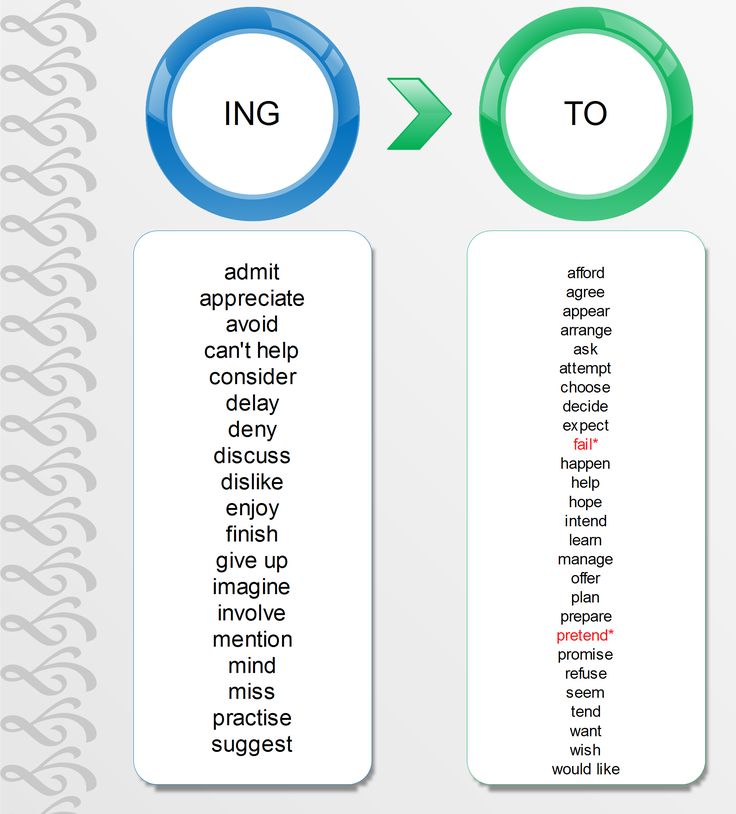 . Let’s take a look at tire rotation patterns recommended by the standardizing body of the tire industry, The Tire and Rim Association, Inc., for all of these possibilities.
. Let’s take a look at tire rotation patterns recommended by the standardizing body of the tire industry, The Tire and Rim Association, Inc., for all of these possibilities.
For vehicles that are 4-wheel, all-wheel, or rear-wheel drive, the rearward cross pattern is recommended. Rear tires are moved to the forward axle and kept on the same side of the vehicle while the front tires are moved to opposite sides of the rear axle.
2. X-PATTERNRecommended for front-wheel drive vehicles such as light-weight trucks and sedans, all tires are moved diagonally, meaning tires are switched from one axle to the opposite as well as being repositioned from one side to the other.
3. FORWARD CROSSThis is the most common pattern for front-wheel drive vehicles. The front axle tires are moved directly back while the rear tires are moved up diagonally to the opposite side of the front axle.
In order to insure that all of the tires on your vehicle have even tread wear, you’ll want to be sure to rotate your full-size spare tire along with the other four. This is especially vital for all-wheel or 4-wheel drive vehicles where even small differences can put undue strain on your car’s drive train.
1. REARWARD CROSS (REAR-WHEEL OR 4-WHEEL DRIVE VEHICLES):Both rear axle tires move directly forward to the front axle while the spare tire moves to the right side of the rear axle. The right front tire moves diagonally back to the left side of the rear axle while the left front tire becomes your new spare tire.
2. FORWARD CROSS (FRONT-WHEEL DRIVE VEHICLES):Rear tires are moved diagonally to opposite sides on the front axle while the right front tire becomes the new spare tire. The spare tire is positioned on the right side of the rear axle while the left tire on the front axle is moved directly back into the left rear position.
All tires are switched with their same-sized partner and remain on the same axle. The two rear tires switch to the opposite side with one another while the two front tires do the same.
2. FRONT-TO-BACK (FOR DIRECTIONAL TIRES)All tires are moved from one axle to the other but remain on the same side of the vehicle. For example, the front left tire is moved to the left side of the rear axle while the rear left tire is repositioned on the left side of the front axle.
Introduction
What is the feature of the directional tread pattern?
Advantages and disadvantages of
directional tiresHow to properly install directional tires
Conclusion
When choosing good tires, you often face the problem of not only a huge number of models, but also a variety of tread patterns, which also need to be sorted out. One of the most popular patterns is the traditional directional pattern, which has been used on the tread surface of a wide variety of tires for decades.
One of the most popular patterns is the traditional directional pattern, which has been used on the tread surface of a wide variety of tires for decades.
What are directional tires and why are they still in demand not only among motorists, but also among professional motorcycle racers? In the article, we will reveal all the secrets and technologies of directional tires, as well as show you how to install them correctly. Here, nuances and discoveries await us at every step.
There are four types of car tire tread pattern:
directional symmetrical,
non-directional symmetrical,
non-directional asymmetrical,
directional asymmetric.
Each drawing is designed for its own version of the road and has its own set of advantages. Different tread patterns have different functionality and behavior on the road. When mounting tires on wheels, their own installation principles also work, which will need to be strictly observed so as not to create an emergency. We will talk about them in the corresponding section.
We will talk about them in the corresponding section.
The essence of the directional tread design is clear at a glance: the blocks, ribs and tread grooves of the V-pattern are directional, spinning the wheel in a certain direction. Most often, directional tires are found in winter models, but there are many of them among summer ones. In symmetrical tires, both halves of the directional tread are mirrored, in an asymmetric design, both halves have a different structure and different functionality.
It is necessary to mount the wheels only in the right direction, otherwise all the advantages will come to naught, and at the same time problems with handling and accelerated wear will be added. Excessive strong pressure will accumulate in the center of the working area, due to which the tire will begin to rise above the road and harm traction in how many areas.
The directional tread pattern is best suited for wet tarmac, as the grooves that widen from the center to the sides are much better at shedding water from the contact surface.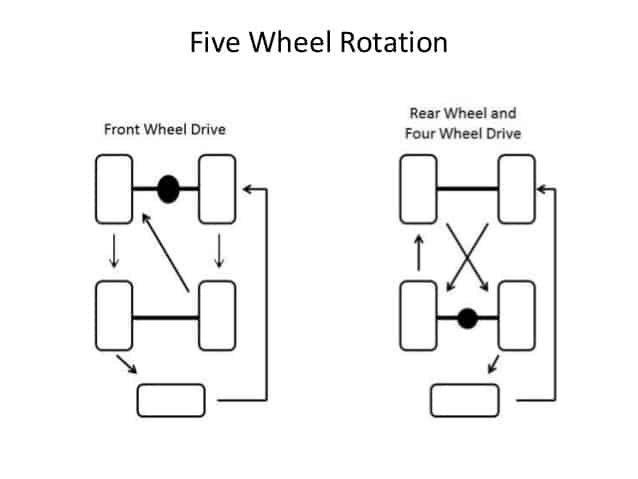 This not only improves grip on wet surfaces, but also works in favor of protection against the effect of hydroplaning. This works even better for a rear-wheel drive car - the front wheels will quickly clear the water before the rear axle sets foot on the road. Accordingly, contact with the track in such a car will be much more thorough.
This not only improves grip on wet surfaces, but also works in favor of protection against the effect of hydroplaning. This works even better for a rear-wheel drive car - the front wheels will quickly clear the water before the rear axle sets foot on the road. Accordingly, contact with the track in such a car will be much more thorough.
The directional pattern of the winter models excels in raking snow and removing dirt from the contact surface - ideal for snowy trails in the winter.
On a dry summer surface, they also give the car a couple of advantages - first of all, it concerns directional and lateral stability. For high-speed tires, this is one of the most relevant designs, as directional tires have a positive effect on the reactions of the car at high speed.
However, their driving disadvantage is the increased noise level during active work on asphalt, and the higher the speed, the stronger the rumble. Also, directional tires are more expensive than non-directional tires, but cheaper than asymmetric ones.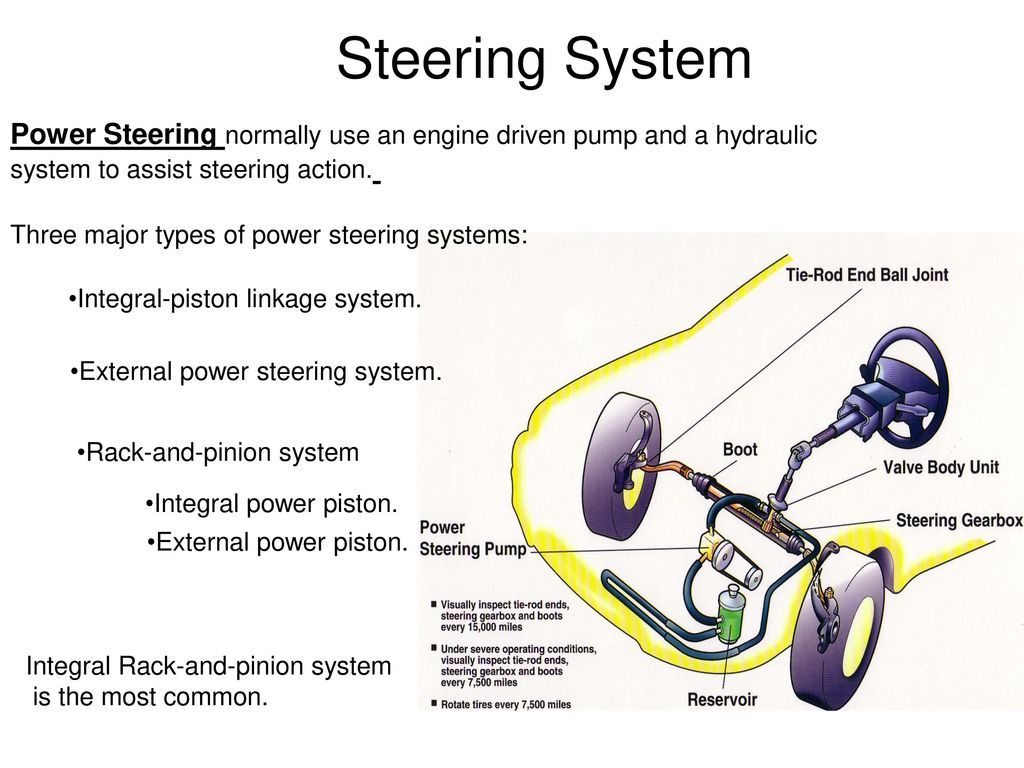 It is better not to install directional tires if you often drive on dirt roads or are completely forced to drive off-road. They will not show effective work on soft and medium hard surfaces. For rural areas, a tread pattern with a non-directional arrangement of large lugs is better suited. Remember that, being put on disks, wheels with directional rubber can only be changed from the front axle to the rear and vice versa, but not rearranged on the sides. To do this, the tires will have to be disassembled and put as needed.
It is better not to install directional tires if you often drive on dirt roads or are completely forced to drive off-road. They will not show effective work on soft and medium hard surfaces. For rural areas, a tread pattern with a non-directional arrangement of large lugs is better suited. Remember that, being put on disks, wheels with directional rubber can only be changed from the front axle to the rear and vice versa, but not rearranged on the sides. To do this, the tires will have to be disassembled and put as needed.
Although we've talked about directional tires, it's the symmetrical design that's most common. Asymmetric directional pattern is very rare. This is due to the fact that such tires are not only much more difficult and expensive to manufacture, but they have one serious drawback for car owners. Due to the very strict installation scheme for the car, constant difficulties arose with spares - I had to constantly carry two spare wheels with me instead of one, because you never know which tire will be damaged, and you can’t change directional asymmetric tires with sides.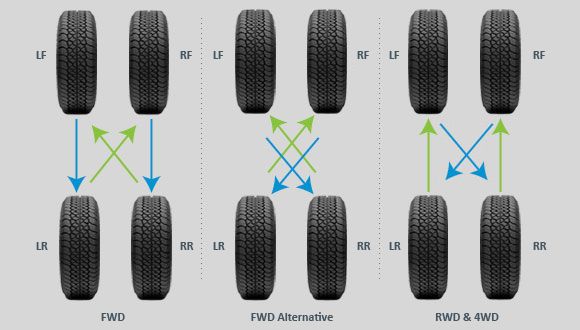 In addition, the warehouses constantly accumulated tires for only one side, which are completely useless without a paired wheel.
In addition, the warehouses constantly accumulated tires for only one side, which are completely useless without a paired wheel.
As mentioned above, one of the "secrets" of directional tires is their installation pattern. Simply put, you need to find the inscription Rotation (from the English. "Rotation") with an arrow on the sidewall. It is this marker that is an indicator - in which direction the tire pattern should “look” when installed on a car. If you make a mistake with the direction of rotation and put the rubber against the arrow, then the drainage system will rake in water like a mill, and not discard it, leveling all the advantages of the model, or even exacerbating them. The fact that the tires are installed incorrectly will tell you a sharply increased noise in the cabin.
If for some reason you could not find this marker, then you can do it even easier - pay attention to the tire tread pattern itself. The rubber of the directional design is a kind of "herringbone" that is directed forward.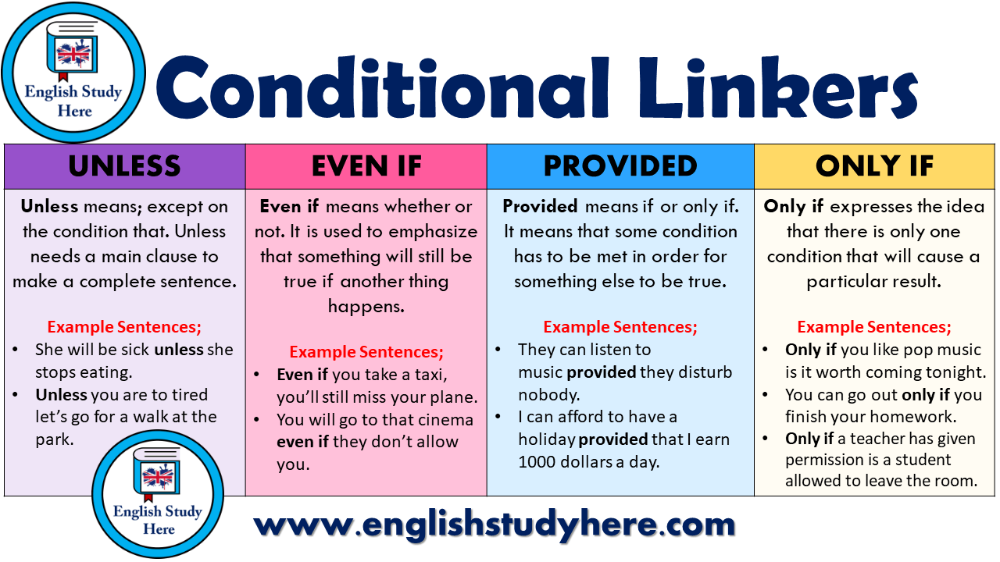 Simply mount the tires so that the tread pattern faces the direction of travel of the vehicle.
Simply mount the tires so that the tread pattern faces the direction of travel of the vehicle.
Rubber with an asymmetric device should only be mounted according to the marking, since each individual side is designed for its own tasks and should never be confused. The correct direction of asymmetric tires will help determine the labels:
Outside, or the outer side of the tire, must face outward.
Inside, or the inner side, respectively, looks inside the car.
Right and left asymmetric tires are much less common. Left (or simply L) will be written on one tire - it means that it must be placed to the left of the body, Right (R) - to the right. You can change them only on one side of the body - front with rear and vice versa.
But much more often, directional tires can be mounted on a rim on either side, the main thing is to follow the direction of the pattern.
And don't forget to balance freshly assembled wheels - tires will never show their advantages and characteristics without good balance.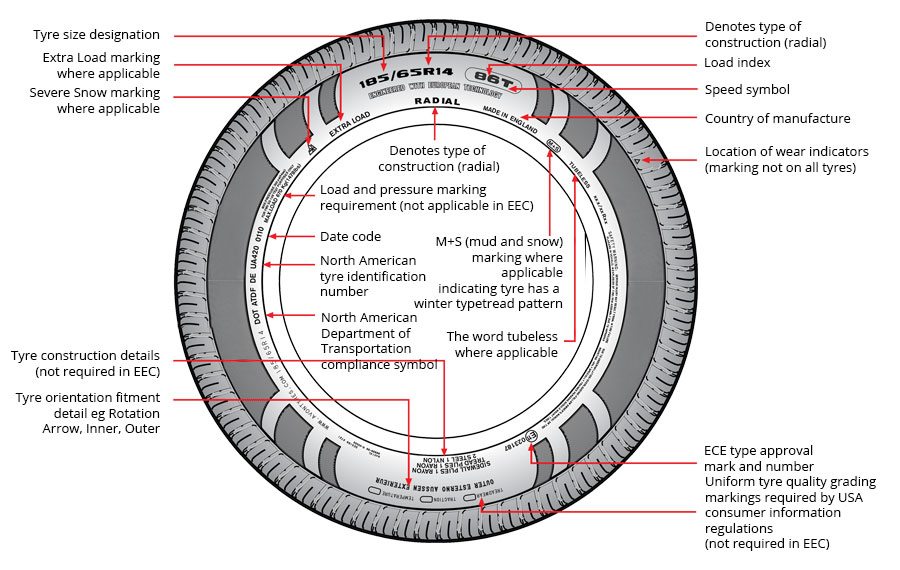 Only after that you can proceed to the installation on the hubs. After installation, go around the car in a circle and check the markings. Recall that we need the rotation direction under the Rotation arrow. If you have an asymmetric directional tire, then make sure that only the Outside is visible. Left (Left) and right (Right) asymmetric tires must show the sides of the body in the direction of travel.
Only after that you can proceed to the installation on the hubs. After installation, go around the car in a circle and check the markings. Recall that we need the rotation direction under the Rotation arrow. If you have an asymmetric directional tire, then make sure that only the Outside is visible. Left (Left) and right (Right) asymmetric tires must show the sides of the body in the direction of travel.
For a couple more tips on directional tires, watch this video:
Save article:
The article says:
The direction of the tire tread not only determines the quality of grip with the surface. In the absence of markings, this figure allows you to determine which tires are in front of you - winter or summer.
The tread pattern directly affects how your car will behave on wet or slippery roads. However, all the efforts of tire developers will be nullified if they are installed incorrectly. That is why it is so important to observe the correct direction of the tread when changing tires. How to determine it and how to install tires correctly, we will tell in this article.
Tires for cars are divided into several groups depending on the direction of the tread pattern of winter tires:
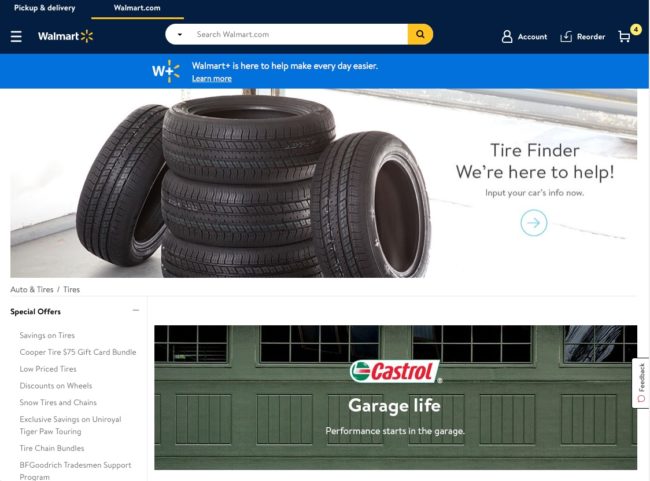
How to determine the direction of the tire tread if several classifications are combined in one tire? Pretty simple: you need to install the wheels according to the generally accepted markings.
Important: you need to position the wheels in such a way that all the words “Inside” are in the direction of the driver!
Determining the direction of rotation of the wheel is easy. It is only necessary that when the car moves forward, the Herringbone tire pattern first touches the road. If the car has stopped, then the tire pattern should look in the direction that is opposite to the movement. This method is suitable for both summer and winter treads.
There are tires, for example, from Bridgestone, which can be interchanged. However, this should be done only crosswise. In other words, after a run of 50-60 thousand km, you can change the location of the protectors. Instead of the front left, install the right rear wheel, and replace the front right with the left rear.
However, this should be done only crosswise. In other words, after a run of 50-60 thousand km, you can change the location of the protectors. Instead of the front left, install the right rear wheel, and replace the front right with the left rear.
Read also
“When to change tires for winter: we understand the nuances of legislation and weather realities”
Read more
If the direction of the tire tread pattern is set, then the wheels can be changed on one side, that is, the rear tires must be changed to the front and vice versa. If there are symmetrical tires, you can arrange them in any order.
Advocates of studded treads and velcro tires cite ample evidence that only these tires are the best available and best suited for harsh winters. On the other hand, there are drivers who only recognize treads with a certain pattern. They will furiously argue in defense of such a choice: maximum maneuverability, no noise while driving, etc.
They will furiously argue in defense of such a choice: maximum maneuverability, no noise while driving, etc.
However, if you are not a fanatic of a certain type of tread and common sense is your friend, then you need to choose tires that take into account the climate of your area and road surface. Next, you will learn the positive and negative sides of wheels that have a different tread pattern and direction.
Photo: rad-star.ru
This pattern is most popular among drivers, as it has a low cost and suitable characteristics.
Positive traits:

Negative qualities:
If you are not a racer and your driving sense is in the first place, then the ideal option in this case is symmetrical non-directional treads.
These tires are easy to recognize because the tread pattern looks like a herringbone.
Positive traits:
Negative qualities:

See also
"What tires can be put on rims 14, 15 and 16: professional advice"
Read more
If you frequently make long trips, prefer high-speed mode and do not have problems with money, then directional tires are just for you. Such tires are also useful where rain is not uncommon and you need to drive on wet road surfaces.
Tires with this type of pattern began to appear more and more often in stores. For the most part, such a tread is found on tires of expensive car models.
Positive traits:
Negative qualities:
This type of rubber is quite rare, because it is expensive and difficult to install. In this regard, such tires are produced mainly for supercars and sports cars.
Positive traits:
Negative qualities:
 Therefore, in the middle of the track, changing the wheel is most likely not possible. Also, this type of rubber pattern is left "L" and right "R" execution.
Therefore, in the middle of the track, changing the wheel is most likely not possible. Also, this type of rubber pattern is left "L" and right "R" execution. In car dealerships, such tires are unlikely to meet you. Basically, they are used for cars that participate in races, or on hypercars. Consequently, the cost of these tires is quite high.
How to determine the direction of the tread on winter tires? Modern car tires are marked with all the necessary data:
 Such inscriptions indicate tires that are not afraid of rain, that is, they give excellent tread contact with wet road surfaces.
Such inscriptions indicate tires that are not afraid of rain, that is, they give excellent tread contact with wet road surfaces. Photo: Shutterstock
When installing new tires on a car or when changing tires seasonally, it is imperative to be attentive to the markings and observe the correct direction of the tread.
Installing Bridgestone asymmetric tires does not require any special skills from you. You just need to remember that "Inside" and "Outside" must be located according to the rules.
Tires with a directional pattern should be placed in such a way that during movement the wheel rotates in the direction indicated by the arrow. It must be remembered that it shows movement forward.
Since it is not difficult to determine the direction of the tread pattern of non-directional symmetrical tires, they are put in any way you want.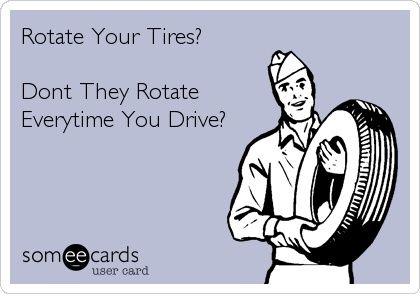 There are no installation restrictions.
There are no installation restrictions.
Important: you must install the wheels correctly! Otherwise, even one incorrectly located wheel will interfere with the quality of driving, and the tire itself will wear out quickly.
Recently, manufacturers have begun to produce symmetrical tires, since it is impossible to determine which one will become unusable. In this regard, the following replacement scheme was adopted:
It should be remembered that in no case should anti-corrosion compounds be used on the road. If you process fasteners with them, then you are guaranteed unbalance. Balance accuracy is easy to determine by the absence of tapping. Correct installation is also determined.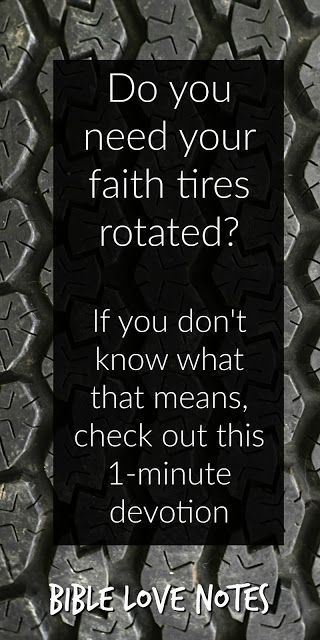
In order for the installation to be correct, it is necessary to check the rotational balance on a special device. At the same time, appropriate equipment is also necessary for installing a tire without a tube. You should understand this point - you can not put tires from different manufacturers on the same car. If this happens, then the suspension starts to knock due to non-uniform damping. Remember, you don't need to save on elasticity and load capacity, otherwise you risk spending more money changing the chassis.
Popular articles
How to choose a subwoofer for your car
19.12.2022
1526
From top to bottom, obliquely: how to degrease a car body before painting
12/15/2022
1441
Chic, shine, beauty: how to remove scratches on a car with your own hands
9. 12.2022
12.2022
1322
Without damage: how to reduce fuel consumption on a car
11/29/2022
858
How much do they pay for advertising on a car
11/25/2022
4071
We advise you to change tires one at a time, so as not to get confused in them. The new tire should immediately be installed in place of the old rubber. During installation, strictly follow all the instructions and follow the direction of the tread of winter tires. A thoughtful and correct arrangement of tires will allow you to evaluate all the driving properties of the car, and there will be no need to purchase new tires every month.
Important: The minimum tread depth on winter tires has been increased to 4mm. Get your winter tires inspected so that there are no problems with the Highway Patrol.
If there is a puncture of the front tire, then if there is a “stowaway”, you can install it instead of the rear wheel, and install it in place of the punctured front rubber.
Why such freezes?
It's simple: at the moment of braking, it is the front wheels that give up to 80% of the effective stop.
In this situation, you need to drive carefully so that you can easily get to the tire shop. Here acceleration does not play any role, only braking efficiency is important. Especially if you need to brake quickly on slippery road surfaces.
See also
"How to choose winter tires and not miscalculate"
Read more
Without a doubt, the wheels in front help to steer the vehicle, which is why the perfect grip of the front tires is so important.
The most effective removal of various kinds of moisture from a tire with a directional pattern from the contact patch. As a result, the risk of aquaplaning is reduced and the vehicle responds faster to steering movements.
Photo: Shutterstock
However, with the wrong arrangement of tires, the situation becomes exactly the opposite. On wet roads, the effect of hydroplaning occurs, the contact patch of rubber with the road surface becomes worse. As a result, the car is difficult to control, stability decreases, and the accident rate increases.
Before buying a new set of tires, you need to decide on which road surface the car will drive most often. Based on these data, you need to select the pattern and direction of the winter tread.
It is important to remember: incorrectly selected tires reduce the controllability of the car, which can lead to an accident. If at some point you are forced to use such a tire, then be very careful and do not exceed the speed limit.
“Due to inattention, I did not check the correct direction of the winter tire tread. As a result, the “herringbone” on the tire looks the other way. On the Internet they say that now you need to wait for hydroplaning. Is my oversight really that dangerous?
If there is ice on the road, then at a temperature of -20 ° C, water appears between the wheel and the ice. So, these lamellas remove water so that the road is not so slippery. If tires are installed incorrectly, water will not drain. It will begin to squeeze out into the center of the tire, increasing the sliding moment.”
“When installed, the direction of the tread pattern of winter tires resembles an arrowhead. With its sharp end, it sort of cuts through dirt, snow, water, scattering them away from the wheel.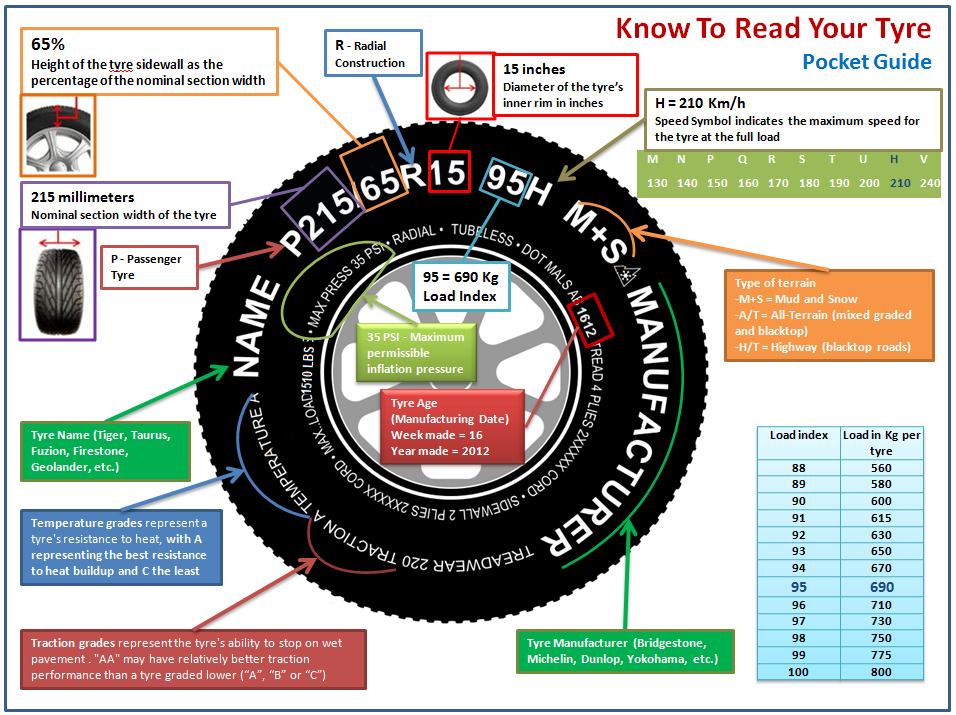 Thus, the contact of the middle of the tire with the road is improved. In this case, the lamellas are cleaned and the tire is repelled much better due to the wedge-shaped bends.
Thus, the contact of the middle of the tire with the road is improved. In this case, the lamellas are cleaned and the tire is repelled much better due to the wedge-shaped bends.
If you set the pattern in the opposite direction, then the entire moisture-containing mixture will be sucked into the center of the contact spot, as it were. Here and hydroplaning is on the way, because this mass sort of lifts the wheel, and traction disappears.
In order to understand the principle of the tire, you need to imagine the movement of the hands of a swimmer who swims breaststroke. The palms are closed, the arms are pushed forward, then spread apart and the swimmer moves forward. If he starts moving his arms in the opposite direction, he won’t swim far.”
“There are no asymmetric “right” and “left” tires for sale. Only the inner and outer surface is indicated. If the side is inside, then there will be an inscription "INSIDE".